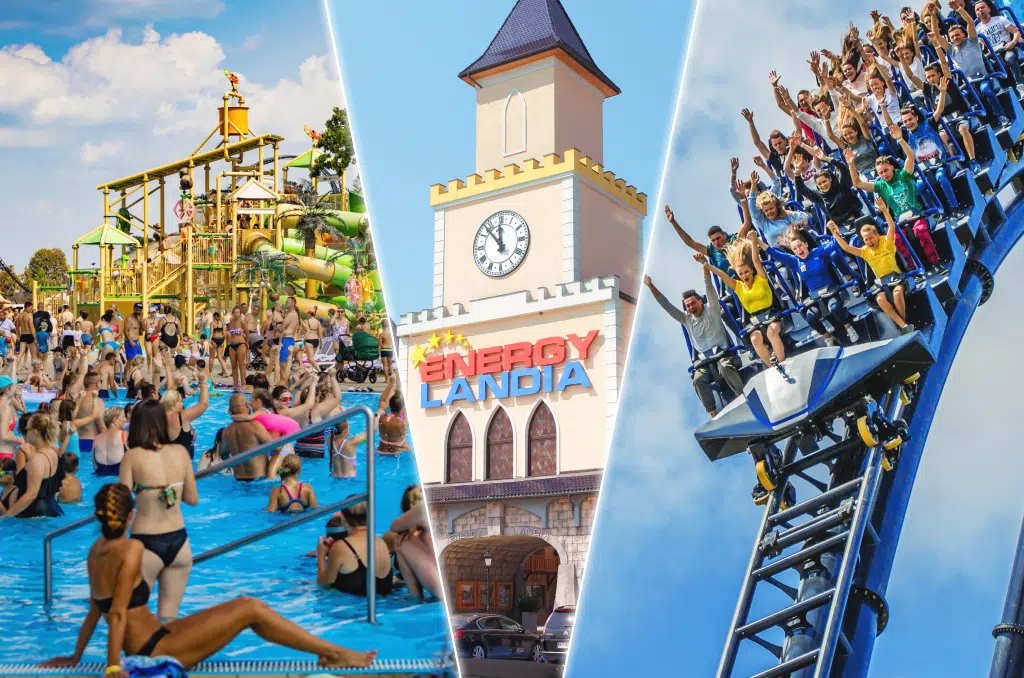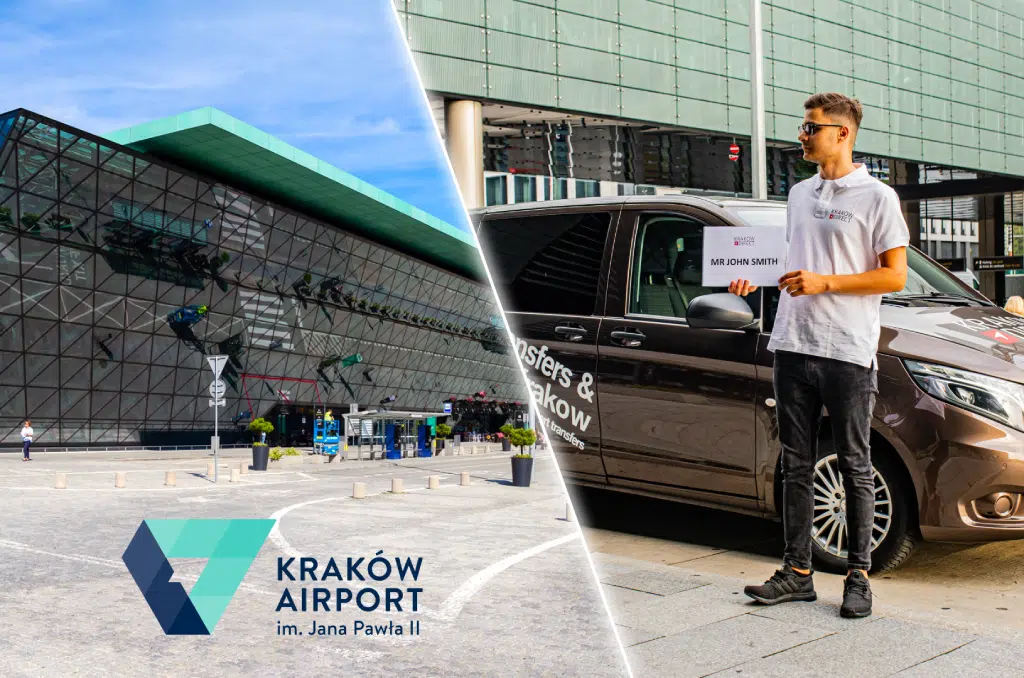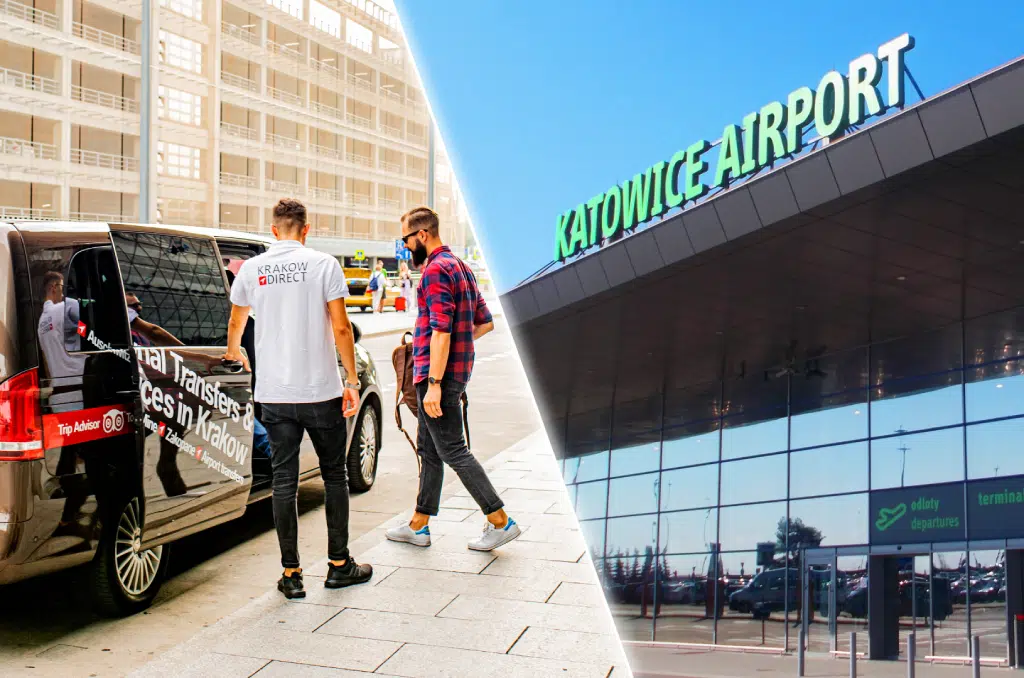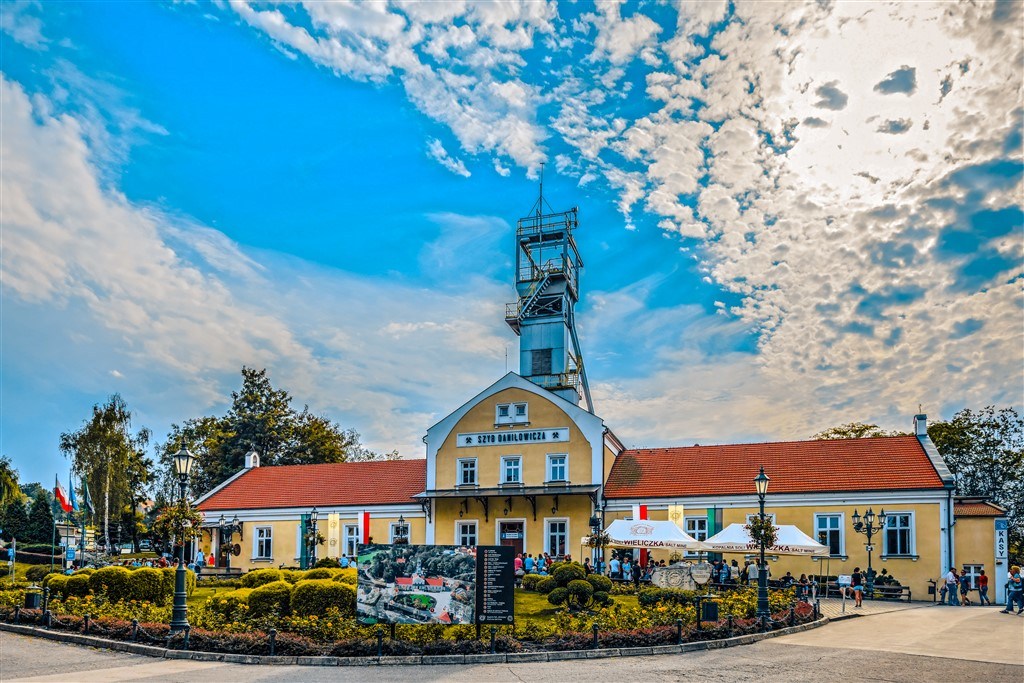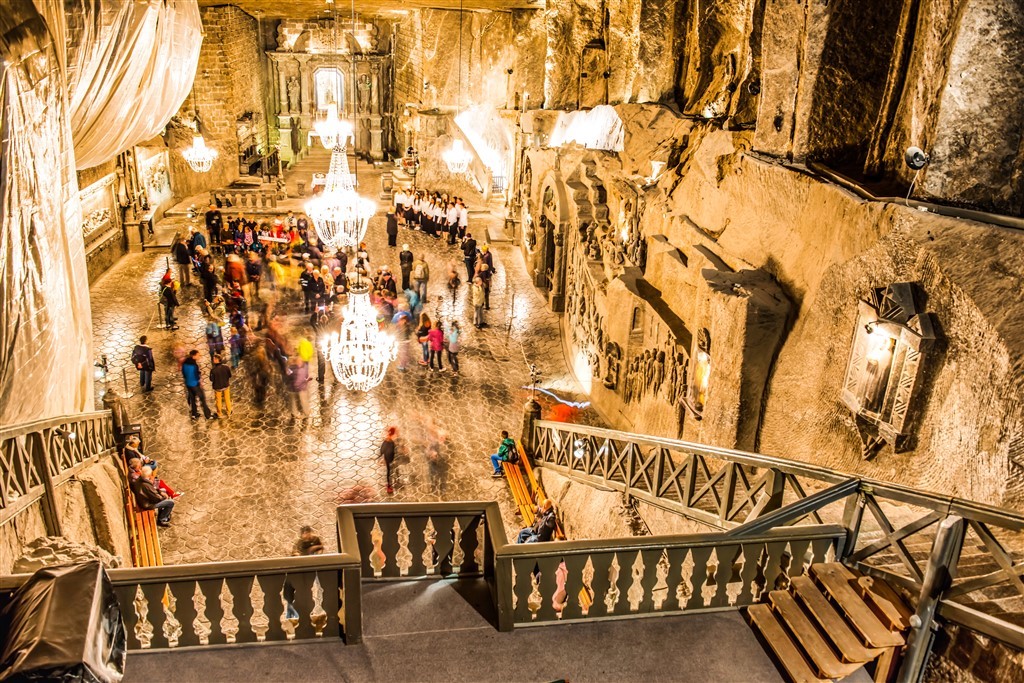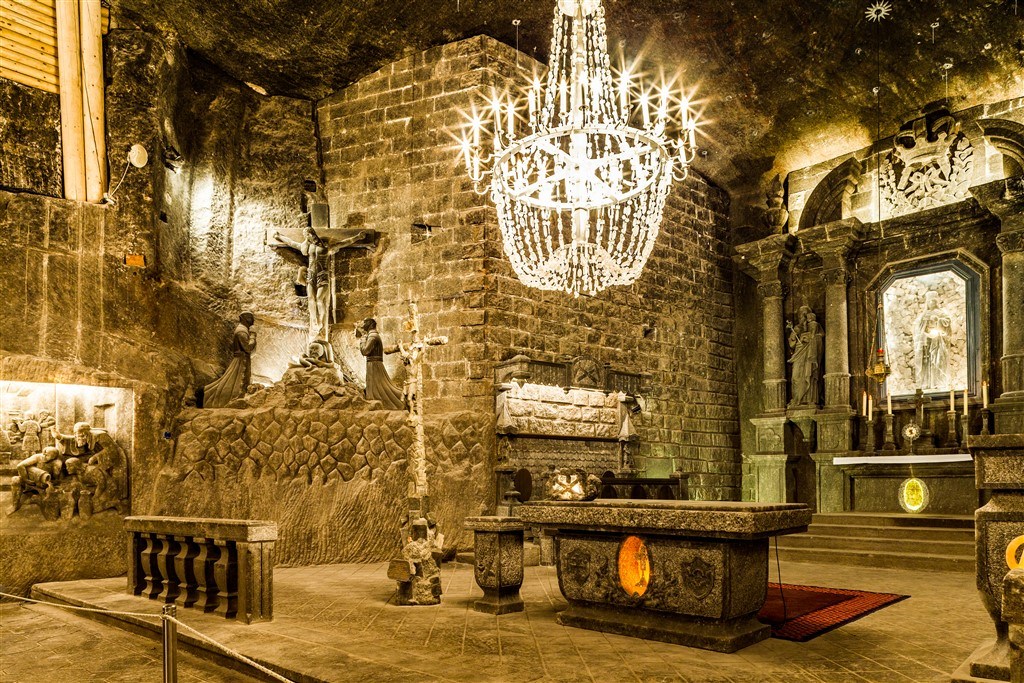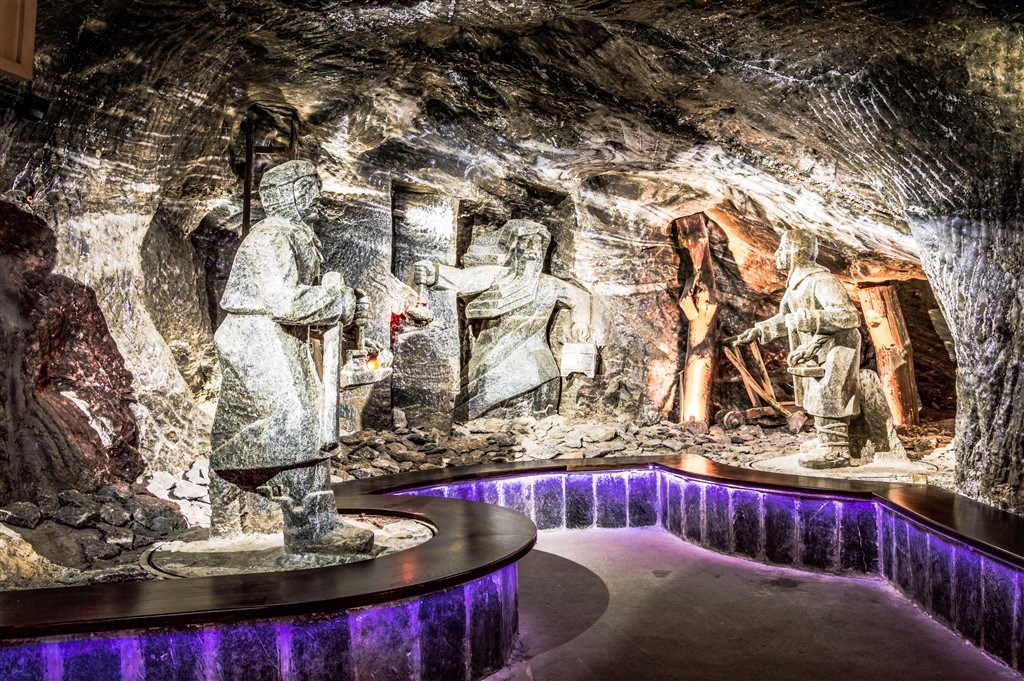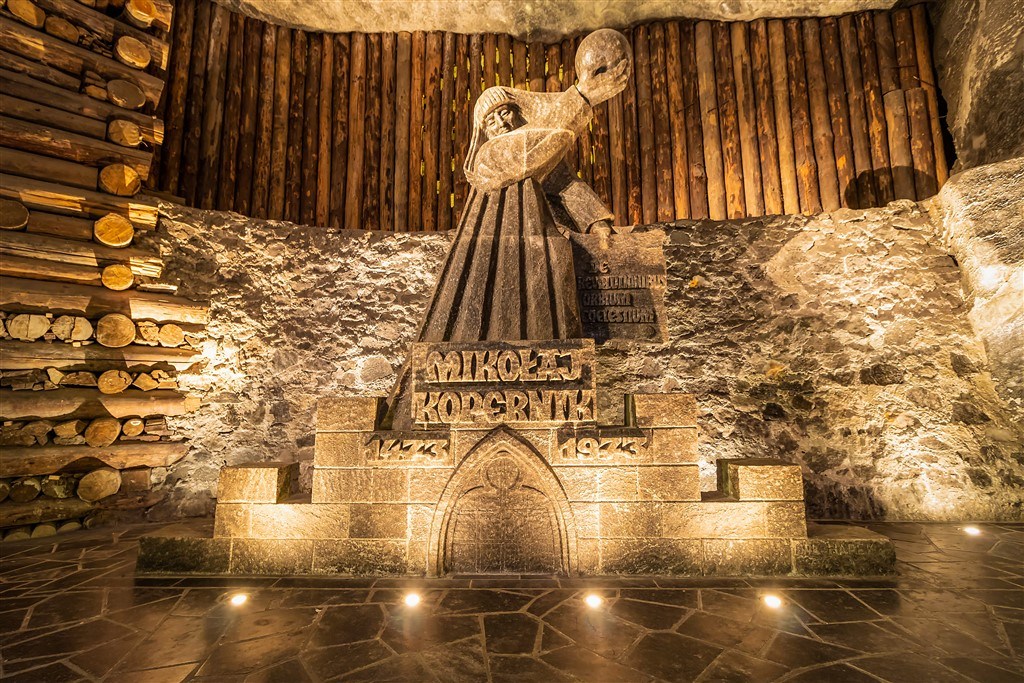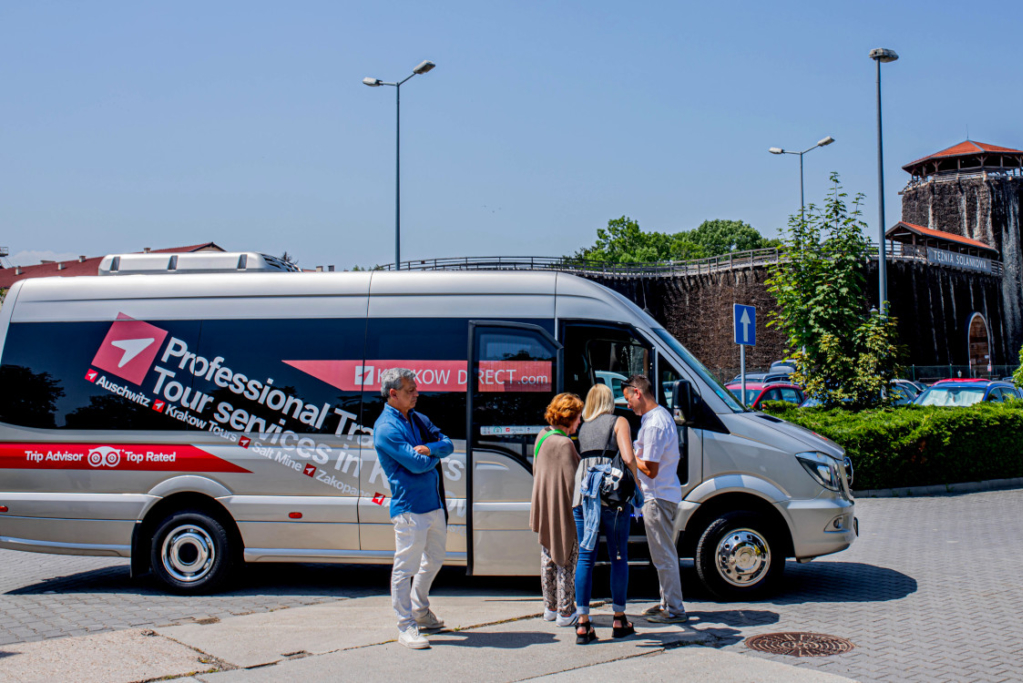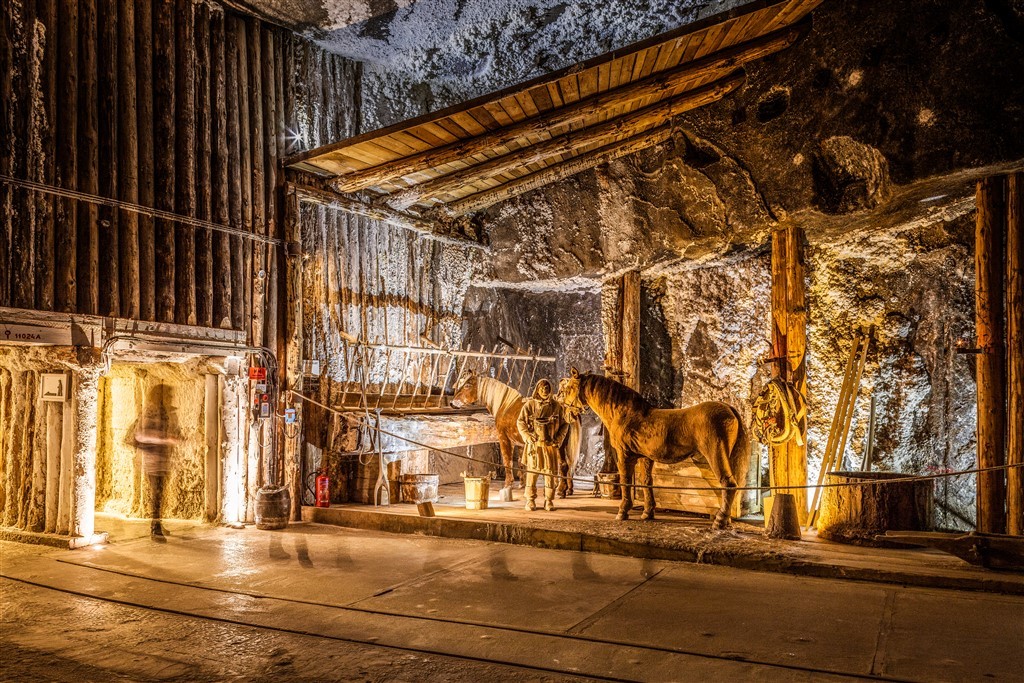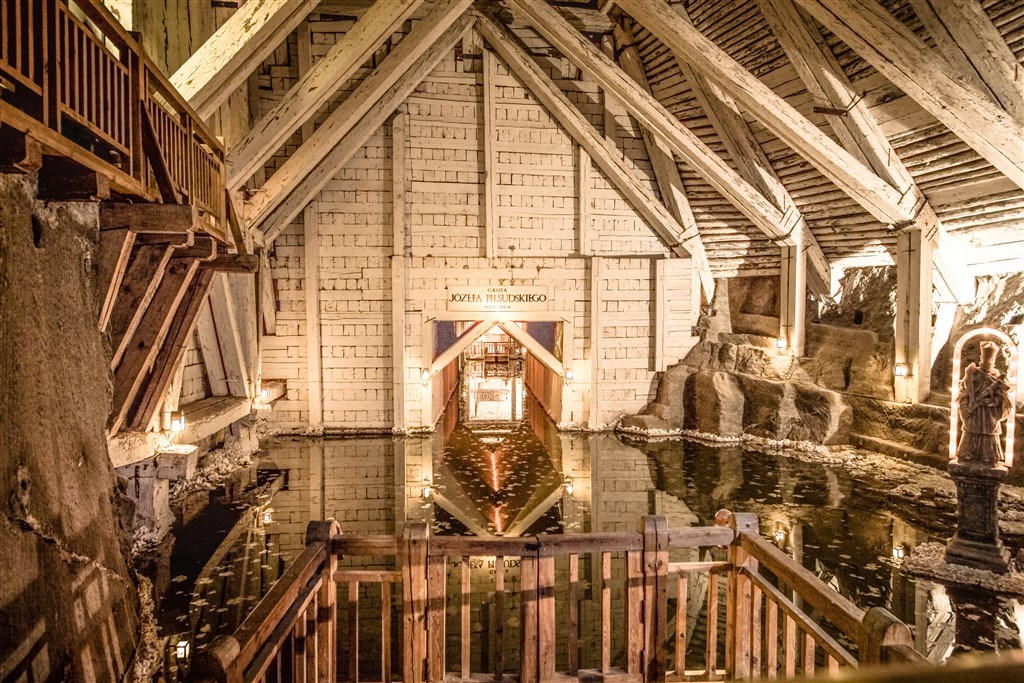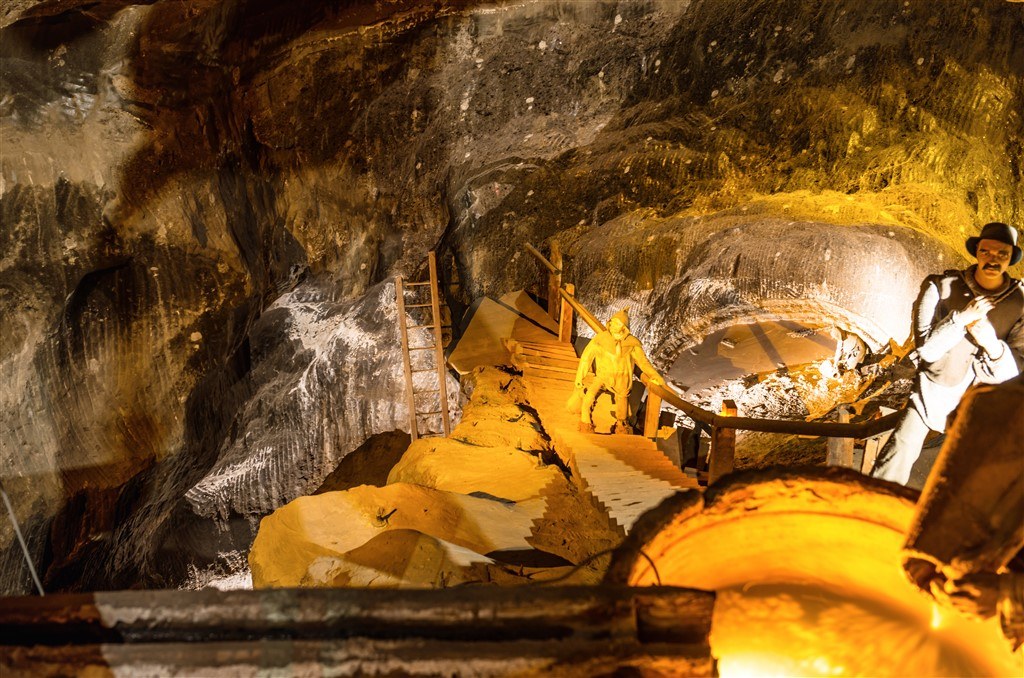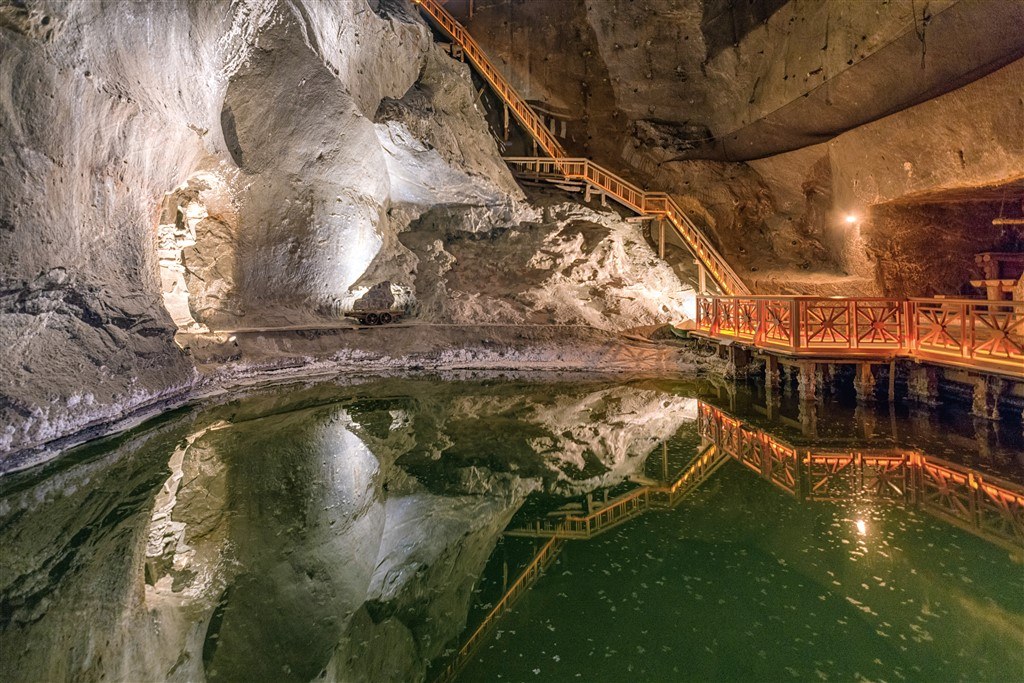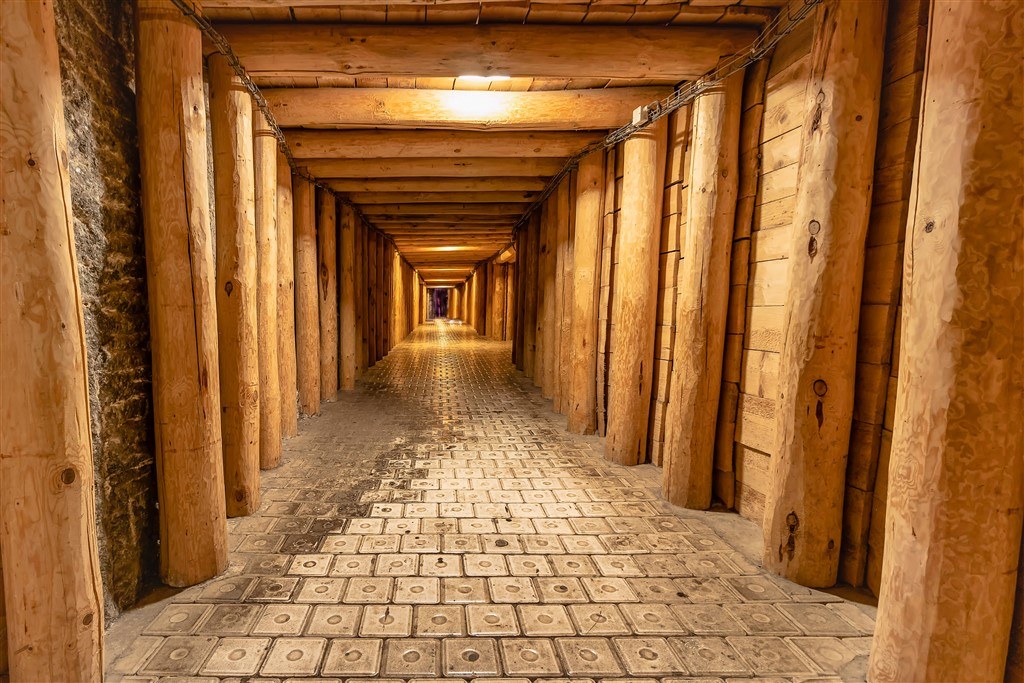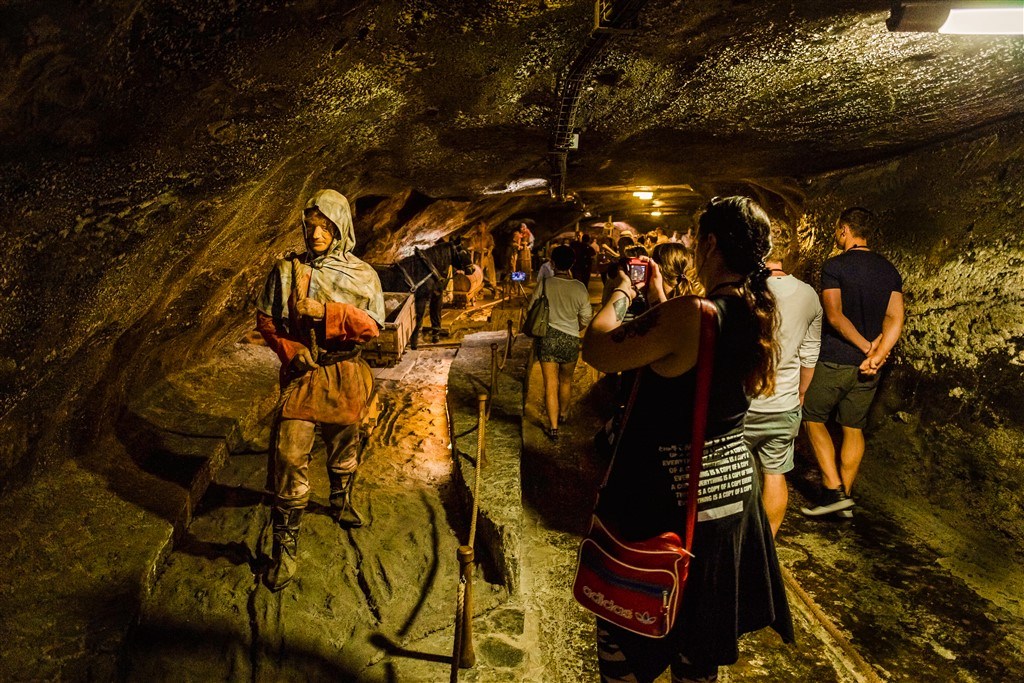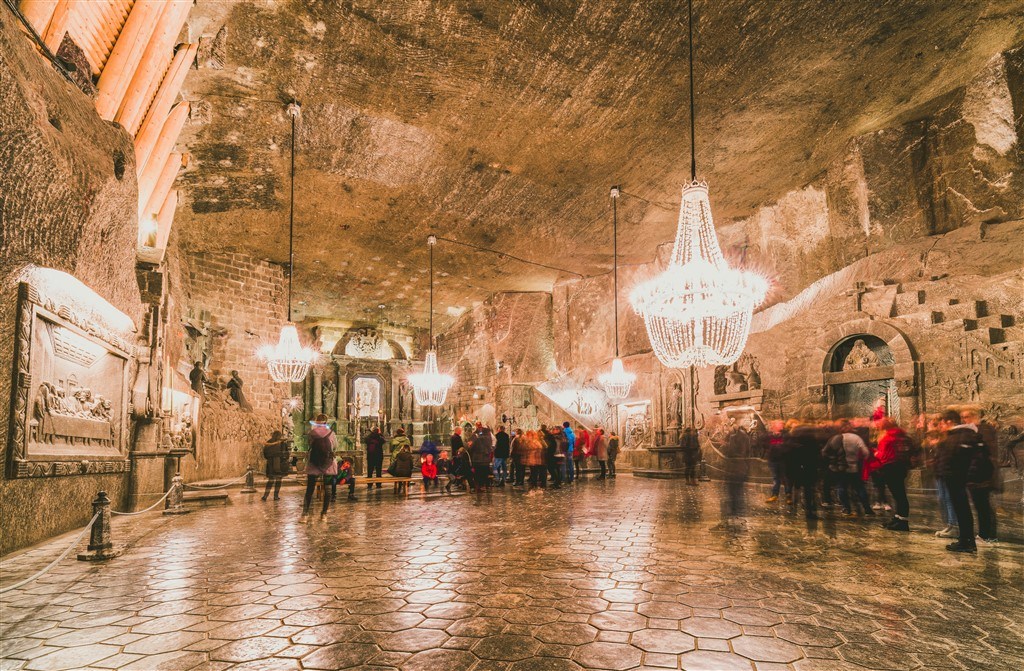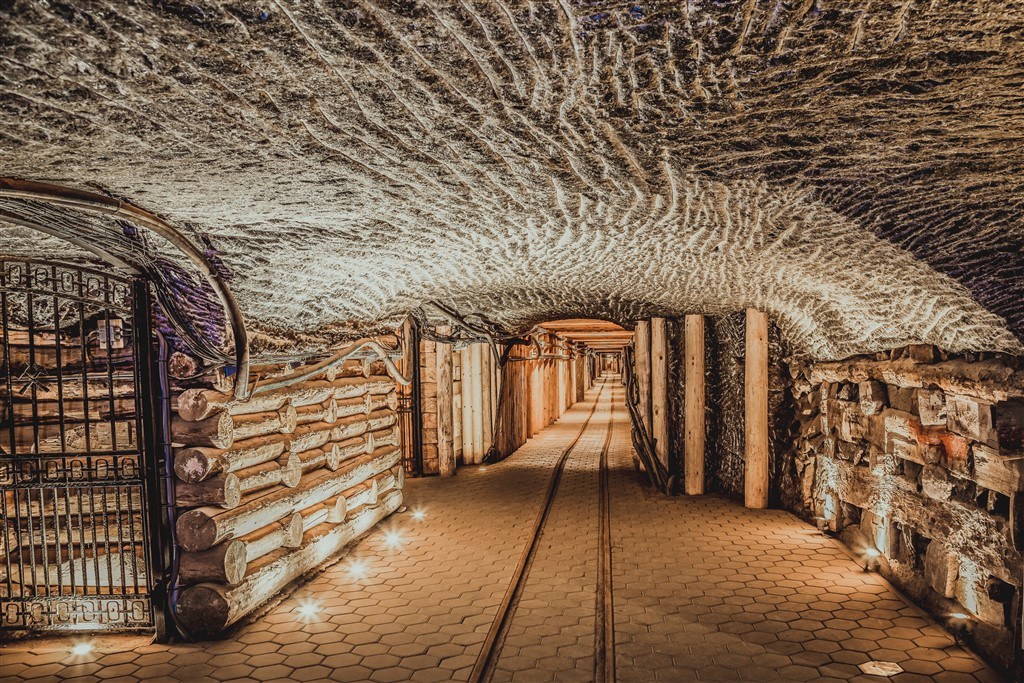The Wieliczka Salt Mine is one of Poland’s best travel attractions. Located in the town of Wieliczka in southern Poland, it has been in operation since the 13th century, which makes it one of the world’s oldest operating mines. Visitors can get from Krakow to Salt Mine in Wieliczka by taking a short 20-minute train or bus ride from Kraków, making it a perfect day trip destination. The mine tours take visitors on an adventure deep underground, reaching down to 135 meters below the surface.
If you’re planning to go on a guided tour of the mine, read this guide and learn out all you need know before your trip. See how to get there, what will you experience, how should you prepare, what to take and what to leave. Enjoy!
Planning your visit to the Wieliczka Salt Mine from Kraków
There are several ways to get from Krakow to Wieliczka. Whether you want to go transfer from Krakow Airport to Wieliczka, or go on a day trip from the city centre, we can help you choose the best option for you. Here are some of the best ones:
| Method of transportation | Speed | Convenience | Comfort |
|---|---|---|---|
| Public bus | Slow | Okay | Poor |
| Local train (KML) | Okay | Poor | Okay |
| Private tours with transport bundle | Fast | Great | Great |
Buses
There are few different transporters departing from Krakow Main Station. However, you can get into bus from other stop than main station. The ride takes about 40 minutes.
Trains
There are even more trains departing from Krakow Main Station. The KML (Lesser Poland Railways) will take you directly to the train station next to the mine’s entrance. You can take that train around every 30 minutes. Time of the drive depends on the train, but it often ranges between 20 and 30 minutes.
Private Guided Tours with Transfer
Private tours from Kraków to Wieliczka are most popular solution for visitors from other countries. No wonder why. By choosing the Salt Mine Tour with KrakowDirect you get the full package in a single fee – ticket, transport and a private guide are all taken care of. The cars are modern and comfortable Mercedes-Benz vehicles and the English-speaking drivers are pleasant and helpful. A taxi transport service is also available. You can also get some special discount or combined your tour with other landmarks as Schindler’s Factory or Auschwitz Birkenau. The drive during private tour lasts for about 20 to 40 minutes each way, depending on the level of traffic.
Everything to know before visiting the Wieliczka Salt Mine
Basic information about the site
Salt Mine in Wieliczka is simply stunning. Walking inside, you can feel as if you stepped into a movie scene from a Disney film! It’s a grand cave with countless, winding corridors filled with mysterious salt chandeliers and lights that show you the way. All these corridors, made of salty rocks are connected by stairs leading you into depths of Wieliczka salt mine. Step into this magical world during one of our Krakow tours!
On the other hand, Salt Museum in Wieliczka is a memorial for thousands of people who worked there over the centuries. There are numerous exhibitions and objects reminding about hard and difficult work of brave miners.
During your group tour a local guide will lead you through 20 exquisite halls to show you its best features and introduce you to the rich history of the mine.
Tickets
Generally, there is often a long queue to enter, so we recommend to book Wieliczka Salt Mine tickets in advance. The only option to enter the Salt Mine is with a certified tour guide, either on a private or group tour. There are special offers for families as well as reduced tickets for students and seniors. Children below the age of 4 may enter with their parents for free.
Time
Tourist and Miner’s Routes usually take at least 3 hours to complete. In that time, there will be a short break at the Drożdżowice Chamber and an opportunity for a meal and a longer break at the Miners’ Tavern.
Parking
If you’re going by car, you most likely won’t have to worry about parking as there are many lots available around the entrance – both public and private owned. The three parking lots owned by the Salt Mine Museum cost 30 PLN per day, per car. Thanks to that you won’t have to worry about anything during your stay underground. The private parking lots vary in price and quality, so we suggest using Google Reviews to scout them out beforehand. You can also find out more specific info about Wieliczka Salt Mine parking.
Things to take for a Wieliczka Salt Mine tour
When preparing for a tour of Wieliczka Salt Mine, there are a few things you should bring along to enhance your experience:
- Comfortable walking shoes. Although the tourist route only covers a small level of the mine, it’s still important to wear comfortable shoes as you’ll be walking up and down stairs a lot.
- Warm clothes. Remember that temperatures underground stay at around 17 degrees Celsius no matter the season. Take a jacket or hoodie, even in the summer, if you don’t want to be freezing during your stay at the salt mine.
- Child carrier or sling. If you want to take your child with you, a stroller won’t do as there are lots of stairs on the way. Make sure you won’t need it.
- Water and/or snacks. If you’re on a budget, no one will stop you from bringing your own snacks and beverages. However, the luggage size is limited to the size of 35cm x 20cm x 20cm.
Choose your guided tour of the Wieliczka Salt Mine
When choosing a guided tour of the Wieliczka Salt Mine, visitors can expect to explore one of the most fascinating attractions in Poland. The mine, which reaches a depth of 327 meters, is divided into multiple routes for visitors to explore. A visit to the salt mine includes sightseeing of the intricate salt carvings, statues carved by miners, and the tools and devices used throughout the mine.
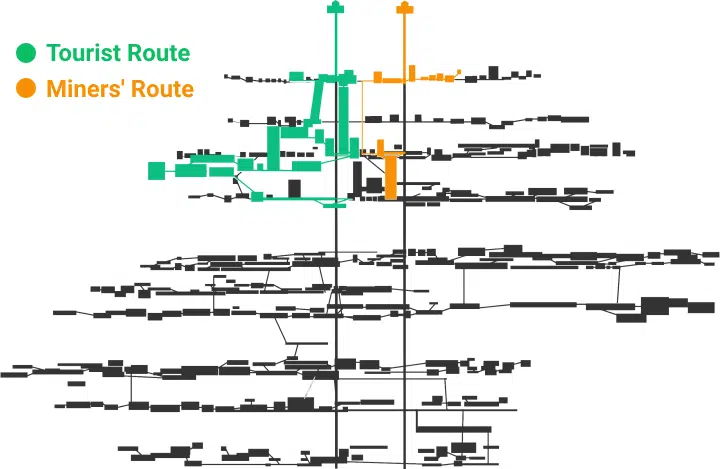
Underground Map of the Wieliczka Salt Mine (Source: wieliczka-saltmine.com)
Wieliczka Tourist Route
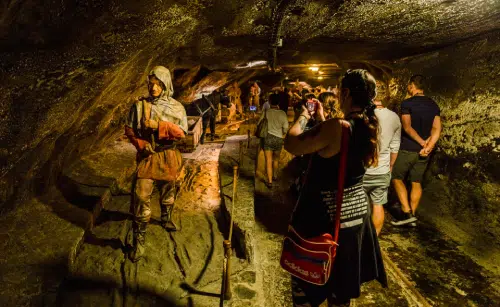
Tourist route covers 3,5 km of picturesque paths and lasts around 2,5 hours. You’ll reach as low as 135 meters underground and take 380 steps, either wooden or carved directly into salt. The tour’s itinerary features scenic landscapes of long corridors, brine lakes, grand salt sculptures and royal chandeliers. The tour starts inside the building of the Daniłowicz Shaft, and you’ll even exit using the lift itself!
Miners Route in Wieliczka
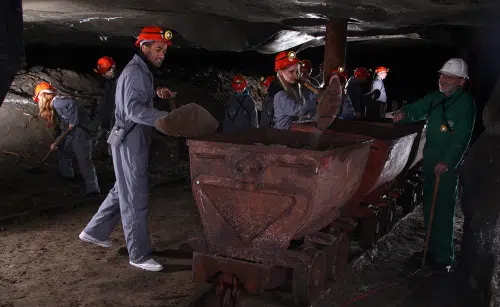
Experience real adventure during a tour from Krakow to Salt Mine in Wieliczka! During Miners’ Route you’ll take on the role of a real miner with professional tools. Also, you’ll use another historical lift used specifically for this tour – the Regis Shaft. A professional local guide will explain you all the rules and will give you some tasks to do. However, be aware that this route requires greater physical effort. It’s great fun for the kids, though*.
*The Miners’ Route is available to visitors over the age of 10.
Graduation Tower in Wieliczka
This therapeutic tourist attraction is found above ground, just a minute’s walk away from the Daniłowicz Shaft. This structure is used to evaporate brine water in order to turn it into salt. However, it serves an ever better purpose as a health facility. Experience the wonderful benefits of fresh, salt-enriched air. A 30 minute visit to the Graduation Tower will greatly improve your respiratory health.
Kraków Saltworks Museum
Wieliczka Salt Mine also features an art-centric exhibition of salt sculptures and really fascinating depictions of medieval mining work at the Krakow Salt Works. It takes around 50 minutes to explore and it ends at the Wieliczka Salt Mine’s gift shop, where you’ll be able to buy real Wieliczka rock salt, as well as albums, educational materials, fun trinkets and souvenirs. Visit to the saltworks is included in price with the Tourist Route ticket.
4 interesting facts about the Wieliczka Salt Mine:
Wieliczka Salt Mine is a UNESCO World Heritage Site
This unique underground museum became a UNESCO World Heritage Site in 1978. It’s also one of the Historic Monuments of Poland.
In 2013, the Bochnia Salt Mine has joined its sister facility, making the Wieliczka and Bochnia Royal Salt Mines a single entry on the UNESCO World Heritage List.
Wieliczka is one of the oldest salt mines in Europe
It’s hard to believe but the beginnings of Wieliczka Salt Mine exploitation date back to the Neolithic period! In the 20th century archaeologists working for the Saltworks Museum discovered prehistoric installations used for brine vaporising. Only as the natural resources became insufficient, people begun to use different salt extraction methods. Around the 13th century wells turned into first mine shafts. It survived and evolved over many different historical periods, making it a witness of the majority of Polish history. That’s why Wieliczka Salt Mine is considered one of the oldest still functioning industrial companies in Europe as a whole.
Krakow Salt Mines had many famous visitors
It’s hard to appoint the most important visitor of the mine, as there were so many of them. Here are some most notable figures in the long history of the mine.
From Poland: Nicolaus Copernicus, Fryderyk Chopin, Bolesław Prus (famous Polish writer), Ignacy Paderewski, John Paul II.
From around the world: Johann Wolfgang von Goethe, Alexander von Humboldt, Dmitri Mendeleyev, Robert Baden-Powell, Bill Clinton, Nigel Kennedy.
Only 2% of the mine is available to the public
At one point in history, Wieliczka Salt Mine was one of the greatest industrial operations in the world. In the 19th century, production of rock salt in Wieliczka reached an incredible 500 thousand tonnes per year!
With that in mind, it makes sense why Wieliczka Salt Mine extends to over 280 kilometers worth of vertical passages and mining tunnels, making it more akin to a massive underground labyrinth used by miners to extract and transport salt to locations all over Poland and Europe.
Chambers worth visiting inside Wieliczka Salt Mine
St. Kinga’s Chapel
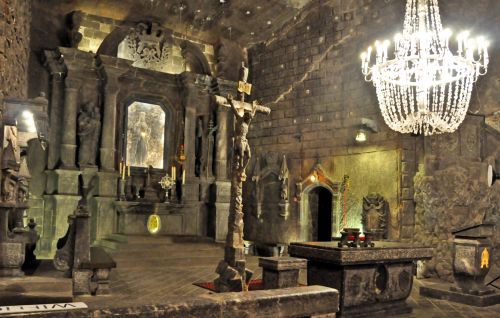
The most impressive part of the mine is the Chapel of St. Kinga, carved by miners entirely out of rock salt. Saint Kinga is the patron saint of salt miners and she’s connected to the legend of the mine’s creation. This impressive underground temple is 54 meters-long, 18 meters-wide and 12-meters-high. Its interior, located 101 m underground, is simply astonishing – its chandeliers, reliefs and , sculptures made of salt are breathtaking.
Its most notable features include a replica of The Last Supper carved in salt straight into one of the chapel’s walls, as well as a life-sized statue of Pope John Paul II sculpted in 1999. What’s more, the chapel is a place of ceremonial events (weddings, anniversaries) as well as concerts.
Nicolaus Copernicus Chamber

Created around 1785, this hall features a beautiful work of art – a life-sized figure of Nicolas Copernicus. He is standing with a small symbolic globe in his hand pointing to the sky. It’s a commemoration of the great astronaut who “stopped the Sun and moved the Earth”. In fact, as a student of Krakow University, he visited the Wieliczka Salt Mine in 1493, becoming one of the most notable guests in place’s history. Its main characteristic are the massive wooden supports that serve as a special reinforcement to the complex.
Chapel of St. Anthony
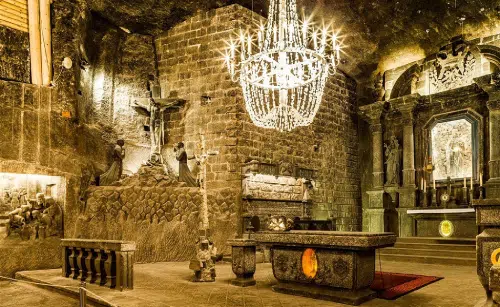
It is the oldest functioning chapel in the Wieliczka Salt Mine. It was built in 1698 in the baroque style, featuring a stone-carved altar, two side altars and a small presbytery. There you’ll find many figures of different saints. It is a great achievement in underground preservation as it had to be repeatedly renovated due to excess air moisture.
Janowice Chamber – the legend of St. Kinga
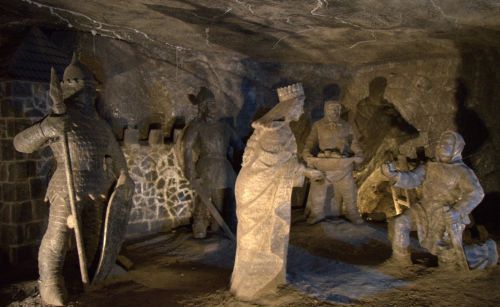
This 17th century cavity together with its statues tell the most important legend of the mine.
As St. Kinga was set to visit Poland from Hungary to get married to Duke Bolesław V The Chaste, she wanted to give country a gift. She wanted her dowry to be a wealth of rock salt, since Poland didn’t have any salt mines at the time.
According to legend, she has left her engagement ring in a great salt mining tunnel back in Hungary. Then, during her visit in Bolesław’s domain, she ordered her miners to dig at a designated space, south-east from the city of Krakow. They hit rock, which turned out to be salt, and inside of the first mined out chunk, Kinga’s ring was found.
Kinga immediately gets recognised as a miracle worker and accepted by the Polish populace. After her death, the people of Poland started worshipping her, especially the salt miners who believed her to be a source of their good fortune at work.
Sielec Chamber

Do you wonder how hard miners were working in 13th century? In Sielec Chamber we can find reconstructed tools for salt transport from the Middle Ages. It includes different kinds of traditional carriages and minecart tracks.
Casimir III The Great Chamber
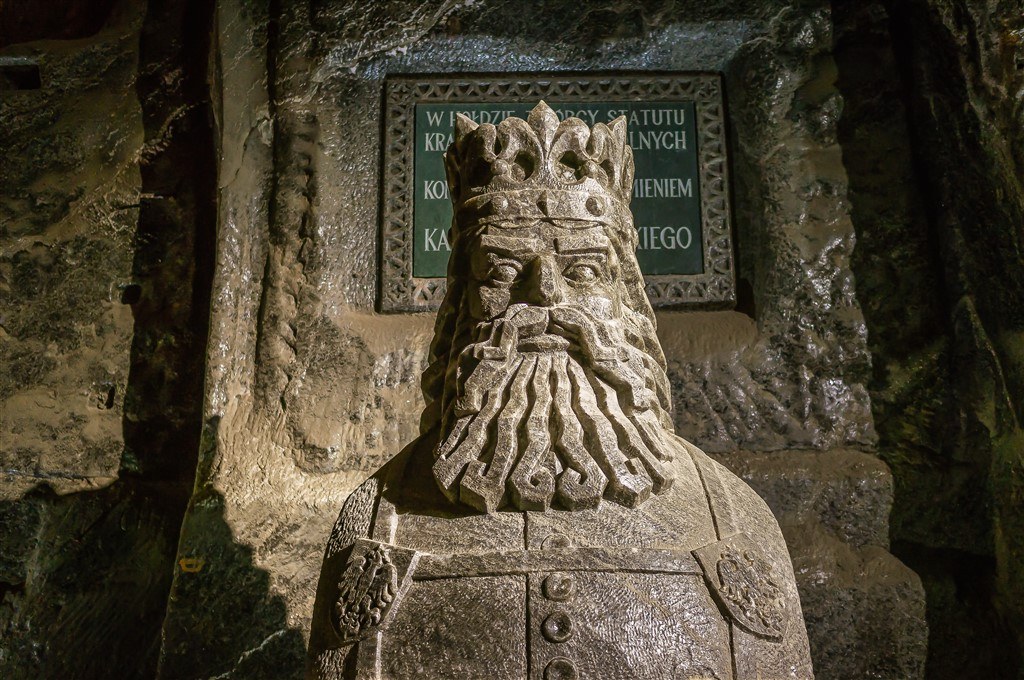
Casimir III the Great was the great Polish king and founder of the Krakow Saltworks. A statue of him resides at the central point of the room. Additionally, you will see an original, historical transportation machine from 18th century.
Pieskowa Skała Chamber
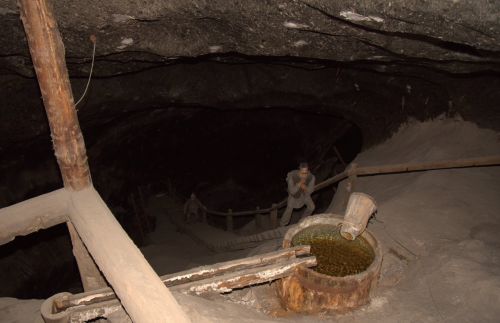
Created in 1669, this beautiful walkway connects two levels of the of the mine. We’ll find here many interesting tools and machines with historical values. It includes transportation tools, original stairs made of salt rock, gutters or reconstructed pump. In addition, Pieskowa Skala is a home for 3 dwarfs, made by a miner-sculptor in the beginning of the 20th century.
Kunegunda Traverse
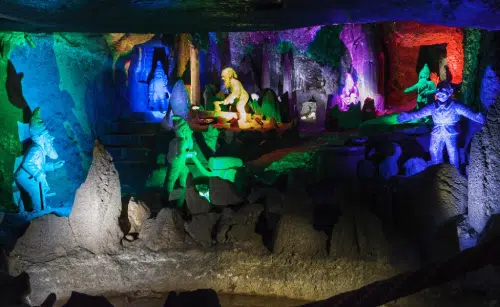
It was created around 1829 being a connector between St. Kinga’s chapel and the topmost level. Most importantly, it features most beautiful stalagmites and stalactites of the Wieliczka Salt Mine. While walking down Kunegunda Shaft, you’ll meet its many small residents – small gnomes representing working miners.
Wessel Chamber

Wessel serves as a sanatorium of the mine. In fact, mine climate is in extremely beneficial for those who suffer from respiratory diseases and various allergies. That’s why in 1997 the Centre of Rehabilitation and Healthcare was opened here. Thanks to mine’s air, high in sodium chloride, calcium and magnesium, many people recovered from their civilizational afflictions.
The Holy Cross Chapel
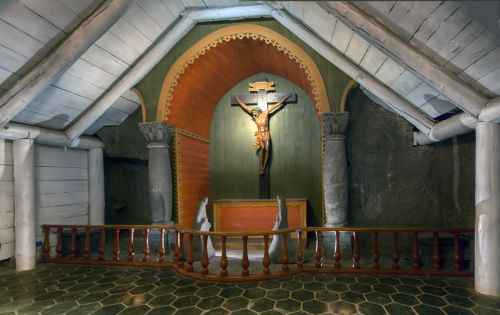
It was created as a gesture of gratitude to God for saving the mine from a massive flooding in the 19th century. It’s an example of a “moving chapel”, from where miners could move their tools into different places in the mine. One can find their impressive wooden figures from XVII century as well as sculptures of crucified Christ, Mother Mary and Monks. Although the figures lost a lot of details in the course of history, they are still very impressive.
Weimar Chamber
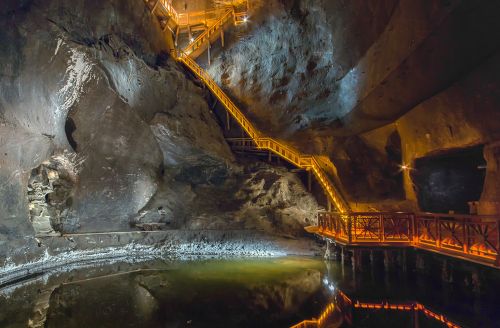
It’s named after the birthplace of J. W. Goethe, who visited the mine himself. That’s why we can see his sculpture at the entrance. Another sculpture in the mine is a figure of the Collector – the good spirit of the mine, which was exhibited during Expo 2000 in Hannover. Additionally, in the 1960s an underwater lake was created, along with an observational bridge.
Michałowice Chamber
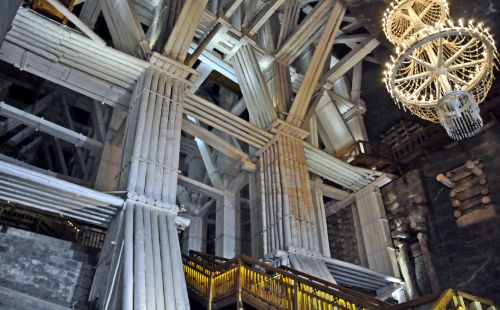
Michałowice Chamber is 35 meters high, making it the single largest chamber in Wieliczka that’s accessible by the public. It took nearly 100 years to mine out this grand chamber. Due to its size, miners had to build special securities including box cribs and salt bricks walls. In addition, in 70’s of the XX century, two bunch pillars were created making architecture of the chamber to be most unconventional.
Drożdżowice Chamber
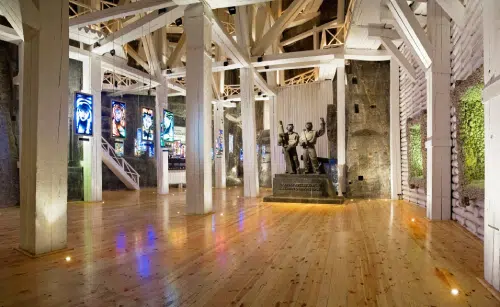
This chamber from the turn of XVII century is also quite impressive due to its size. It was secured by a box crib and special construction. Nowadays, Drozdzowice Chamber hosts many exhibitions, concerts and banquets. It’s also serves as an underground rest stop for tourists.
Stanisław Staszic Chamber
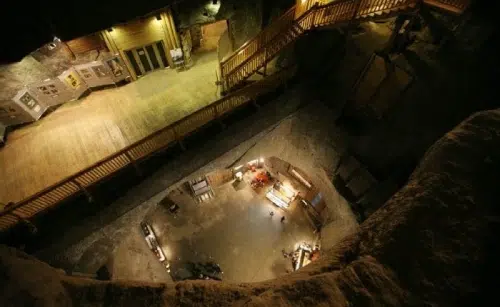
Its the highest chamber in the mine (50 m) from the XX century. During the World War II period, it was supposed to serve as Hitler’s planes construction hall. Fortunately, the Germans backed out from this idea. The chamber bears the name of a famous Polish businessman – Stanislaw Staszic.
The Treasurer’s Chamber
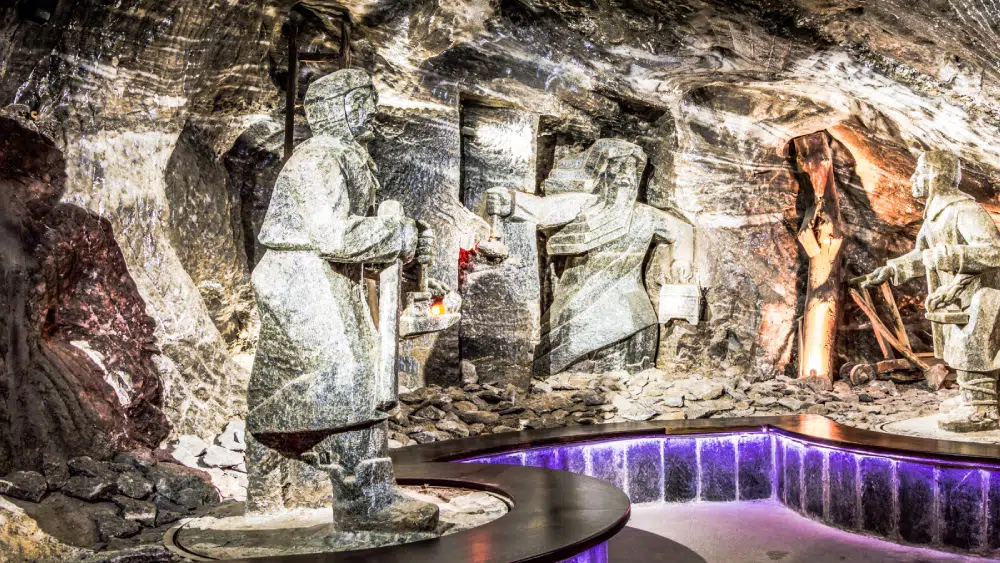
The passage between Staszic and Vistula chambers features a monument of the most significant figure for Salt Mine. The ghost of the Treasurer was the protector and warden for all miners.
Budryk Chamber

Witold Budryk was a prominent professor of AGH University of Science and Technology in Krakow. He was a specialist in the field of ventilation and fire protection. Nowadays, it’s the home to the Miner’s Tavern – the second rest stop on the Tourist Route.
Warsaw Chamber
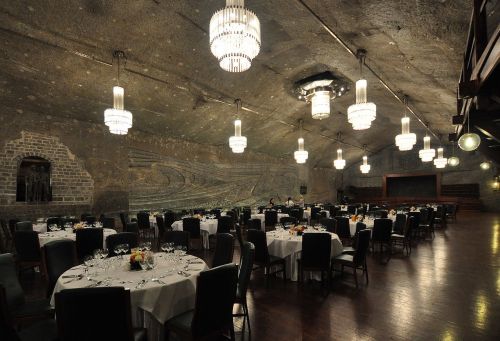
As one of Wieliczka’s most spacious halls, Warsaw Chamber is devoted for entertainment! It means that numerous events including tournaments, concerts and balls takes place in there. It was created at the beginning of the 20th century. The main statue found there is a grand salt monument of miners.
Vistula Chamber
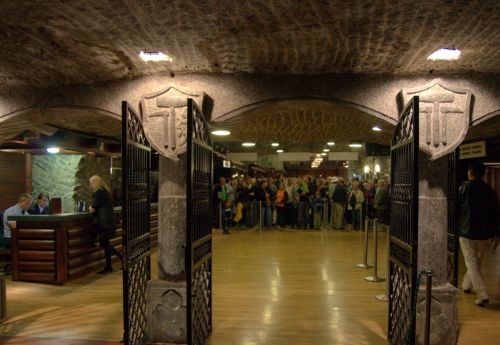
Since the 60’s, Vistula Chamber serves as a space to relax at the end of the tour. In there you’ll find benches and changing rooms for those who attending different events at the Warsaw Chamber. Additionally, there are some salty souvenirs available for tourists! It’s also a meeting point for those returning from their underground tour.
Bochnia Royal Salt Mine – Wieliczka’s older sister mine
Visitors to the Wieliczka Mine can also take a short drive to the lesser-known Bochnia Royal Salt Mine, which is equally impressive and has its own unique attractions.
Fun fact: the salt mine in Bochnia is actually older than Wieliczka. It’s 3500 years old being the oldest salt mine in Europe. It was also the first mine in Poland to receive permission for deep excavation by the King of Poland. Not only its is national monument of history but also one of the UNESCO World Heritage Sites. Additionally, it is still active mine. There are different types of routes available in Bochnia salt mine: tourist route, historic route and natural track, each with English guide.
City of Bochnia lays 40 km from Krakow which makes it popular destination for sightseeing outside of the city.
FAQs
Is it safe to go on Wieliczka Salt Mine Krakow tour?
2 million visitors enter the mine each year and this number is surely going to grow. Still, there are no dangerous cases in the history of its touristic activity. As Wieliczka is getting more and more popular it developed modern technologies to make sure that each visitor and worker is safe. That is to say that you don’t need to be afraid to go on Wieliczka salt mine Krakow tours at all.
The only thing you need to keep in mind is that the tour features a lot of stairs and slippery paths. However, if you stay sharp and follow your guide, everything will be fine!
Are the salt mines in Krakow worth visiting?
It’s not difficult question to answer – of course it’s worth! Millions of people every year go from Krakow to Salt Mine in Wieliczka and return completely amazed. Of course, everybody have some different preferences, but in this case the answer is simple. It’s worth to visit Wieliczka with family, friends, kids, grandparents, lovers or by your own. It’s worth to visit it at any time of the year. Whether you’re a history lover, thrill seeker or couch potato, you should take a day to visit this underground marvel. It’s one of the first spots to be designated a UNESCO World Heritage Site for a reason.
How much are the tickets to Wieliczka Salt Mine?
Tourist Route or Miners’ Route:
- Standard Ticket – 122 PLN
- Reduced Ticket – 102 PLN
- Family Ticket (2+2) – 366 PLN
Graduation Tower:
- Entry – 7 PLN per person
- 5 Visit Pass* – 30 PLN per person
*You must redeem your 5 visits within 30 days since your first entry.
How deep is the Wieliczka salt mine?
Salt Mine in Wieliczka has 9 levels. First is located 64 meters underground while fort the last one is 327 meters! Overall length of all corridors is over 300 km and the whole area covers 7,5 millions cubic meters.











